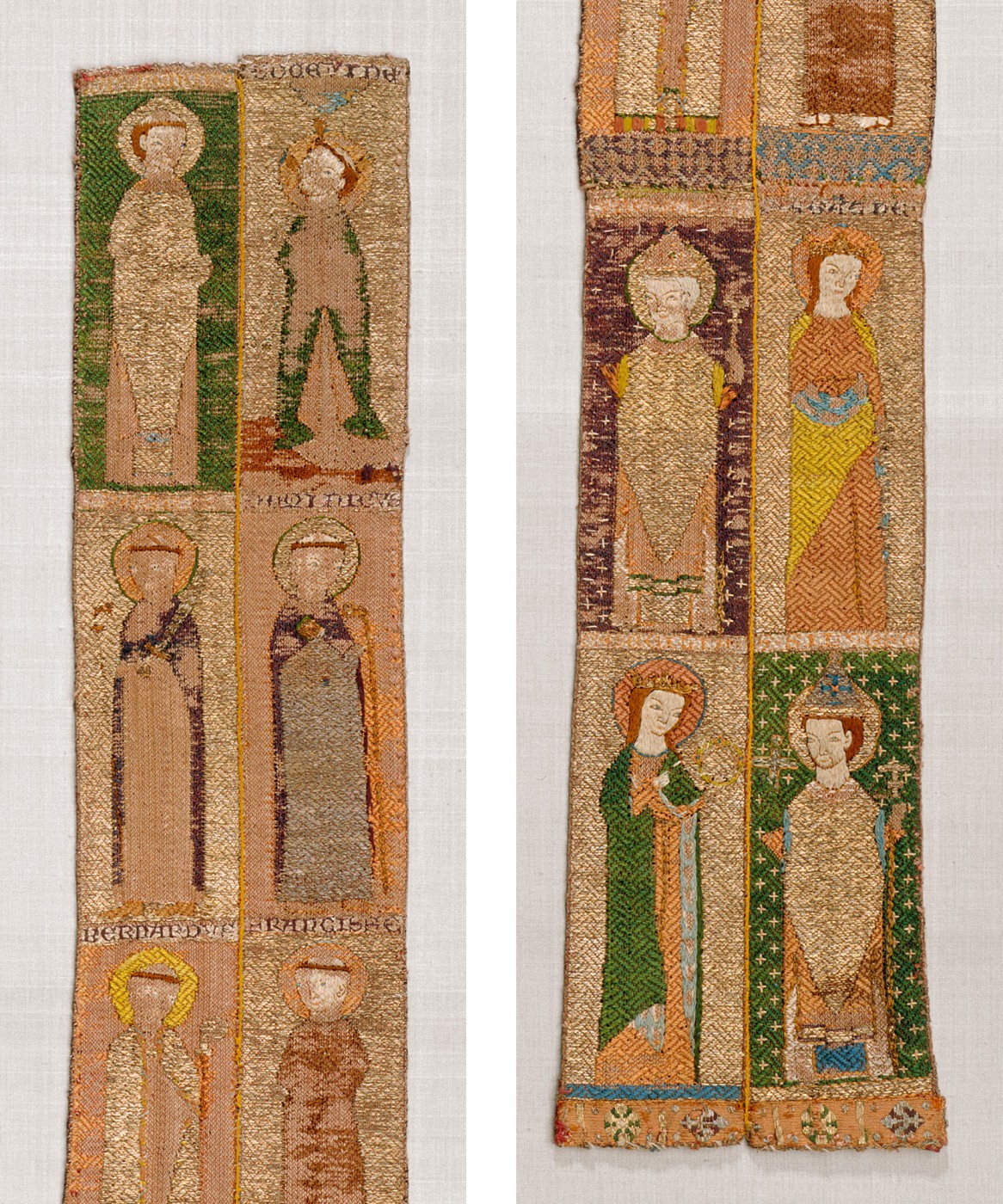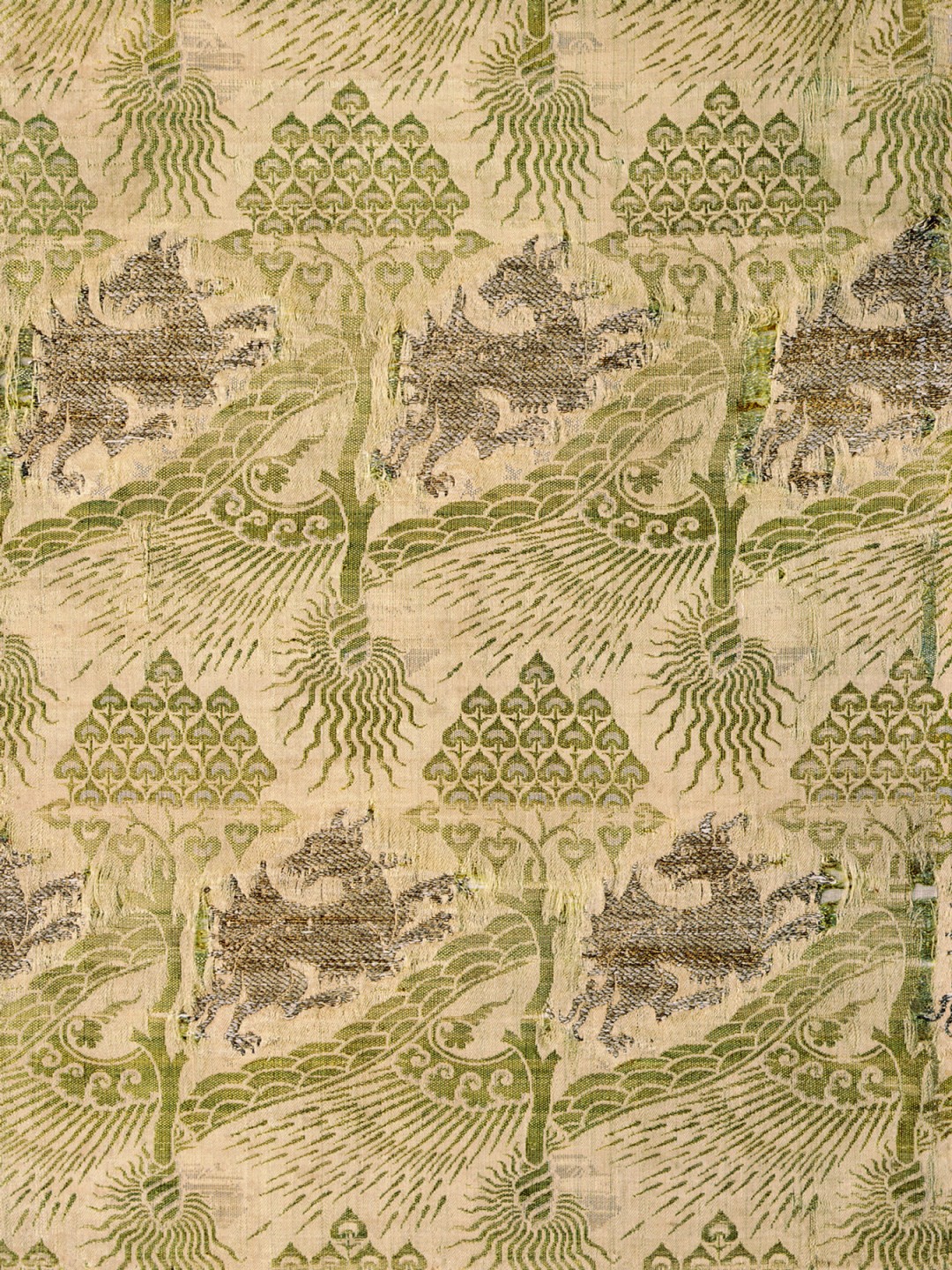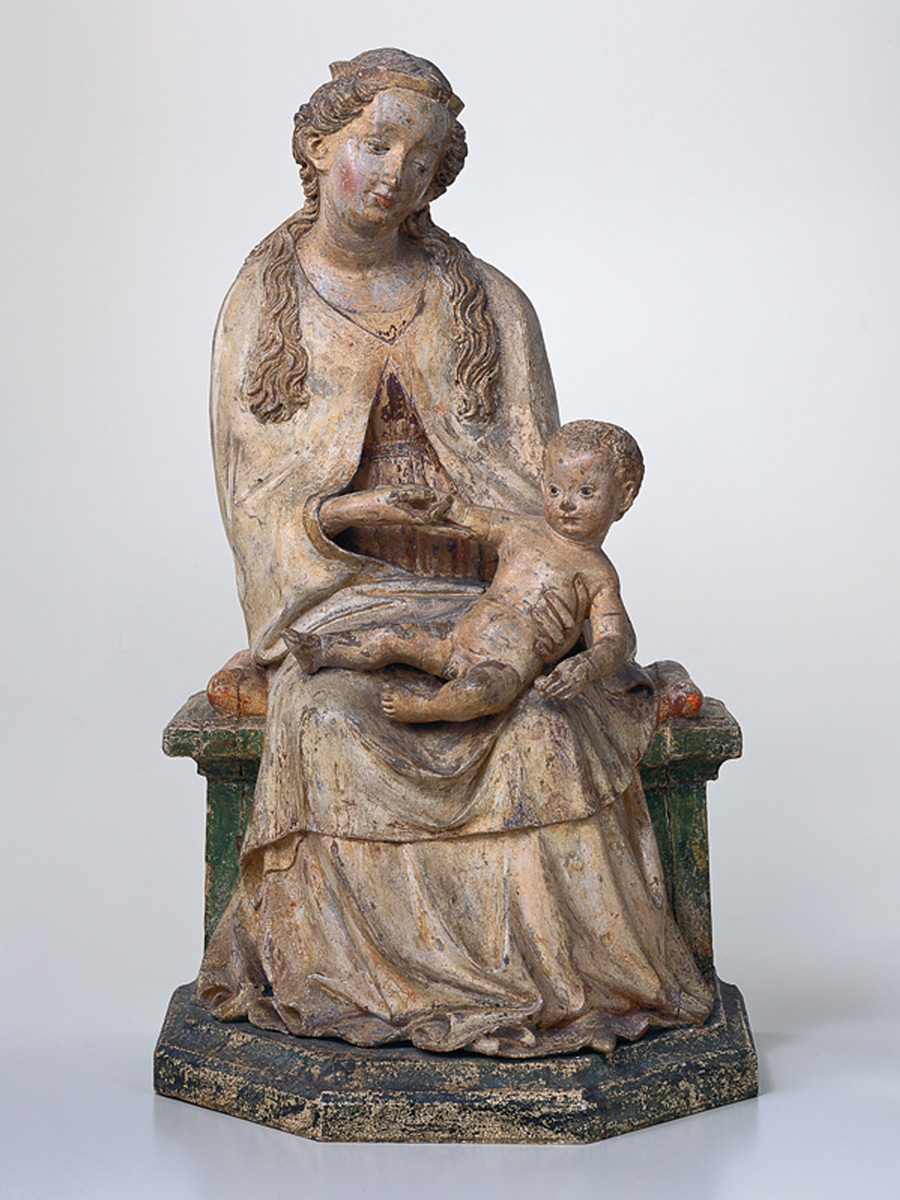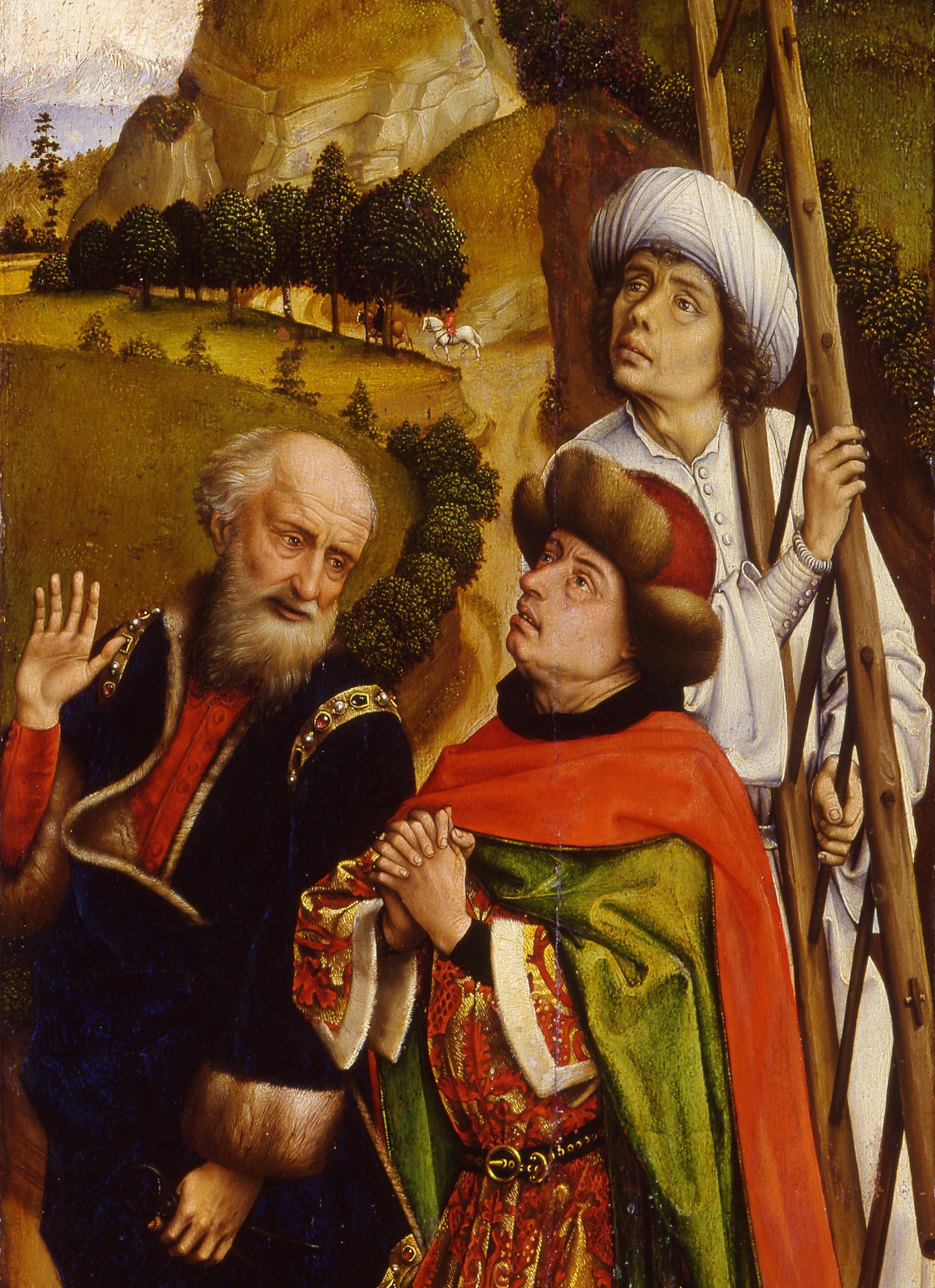Collection Europe in the Late Middle Ages gave church interiors a new look
Most of the fabrics for new church hangings in the 14th and 15th centuries were made in Europe. Italy was especially important as a source of multi-coloured, lavishly patterned silks, shot through with gold. Embroidery also thrived, producing masterfully worked figures and scenes in the Christian tradition. Similar motifs can be seen in the exquisite examples of sacred paintings and wood carvings in the Abegg-Stiftung’s permanent exhibition.







